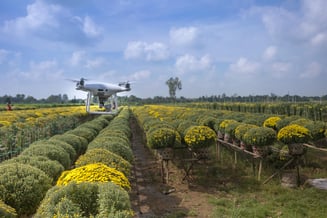The Robotics-as-a-Service industry is an expensive one to play in. Every leased robot represents a significant upfront investment, and once it’s in a customer’s hands, the pressure is on to keep it running. Without fleet tracking or asset management for your robots, you're running blind.
You need to know where every robot is, how it’s performing, and what it’s costing you to keep it there. Fleet tracking brings that visibility. It connects the operational and financial sides of your business, helping you protect uptime and reduce capital spending without sacrificing performance.
Idle robots are sunk capital
When you lease robots to customers, each one should be working and generating income. But some may sit idle. Sometimes customers underuse them; others are waiting for parts or maintenance. Without tracking, you don’t know which is which.
An idle robot still depreciates. It still represents tied-up capital that should be earning. With fleet tracking, you can see which robots are underutilised well in advance. If a customer isn't fully utilising the robots they've leased, chances are they will not renew at the same level, which means you can better predict renewal terms and create plans to redeploy underused robots. This results in fewer wasted robotic assets and less unnecessary spending on new units.
Maintenance insight protects uptime and contracts
When customers lease robots, uptime is part of the contract. You promise a level of performance, and every failure puts that promise at risk. With fleet tracking, maintenance stops being reactive. You can easily stick to preventive maintenance schedules to reduce the chances of downtime. Many fleet tracking or asset management tools for robots can handle live telemetry such as operating hours, battery health, temperature, or fault alerts, which give early warning when something isn’t right. Service teams can act proactively before a breakdown occurs, rather than reactively after it occurs.
This isn’t just about technical efficiency. Preventive action protects SLAs, keeps customers running, and reduces the financial penalties that come from missed SLAs. A repair today costs less than the same repair later (or worse), plus the lost revenue from the customer.
Data-driven maintenance reduces lifetime CAPEX
Leasing models depend on predictable asset lifecycles. You plan depreciation, financing, and replacement around expected usage. But when real-world data doesn’t match those expectations, you risk replacing assets too early or too late.
Fleet tracking helps correct that. You can base maintenance and replacement on a wealth of in-depth maintenance histories and live usage hours, not calendar dates. If a robot is performing well, extend its lease. If it’s deteriorating faster than expected, plan its replacement before it fails in the field.
This precision stretches every capital investment further. Instead of adding more robots to cover downtime or uncertainty, you get more value from the fleet you already have.
Identify prototype issues before spending a fortune
Your R&D team maybe be developing your robots to improve customer satisfaction, increase reliability, cut the production costs, or a mix of all three. But how can you tell if a prototype module or component is working as expected? Asset management solutions like Starhive can keep track of which robots have prototype parts installed. Combined with maintenance logs, it's simple to identify if prototype parts are causing more faults sooner rather than later.
Meaning your R&D can fix any issues earlier, rather than the business investing heavily in a component that ultimately doesn't meet the specifications it needs to, again reducing your capital expenditure and increasing uptime for customers.
Final thoughts
Leasing robots is a balancing act between performance, reliability, and cost. Without clear visibility, that balance tips fast.
Fleet tracking keeps it steady. It helps you use assets more efficiently, reduce unnecessary purchases, and maintain uptime across your customer base. For robotics companies scaling their leasing operations, it’s not just about tracking what you have and where it is, it’s about protecting your capital and your reputation at the same time.
If you’re still managing fleets through spreadsheets or static databases, now is the time to modernise. The more robots you deploy, the more valuable your data becomes. Fleet tracking with Starhive turns that data into control.
.png)



